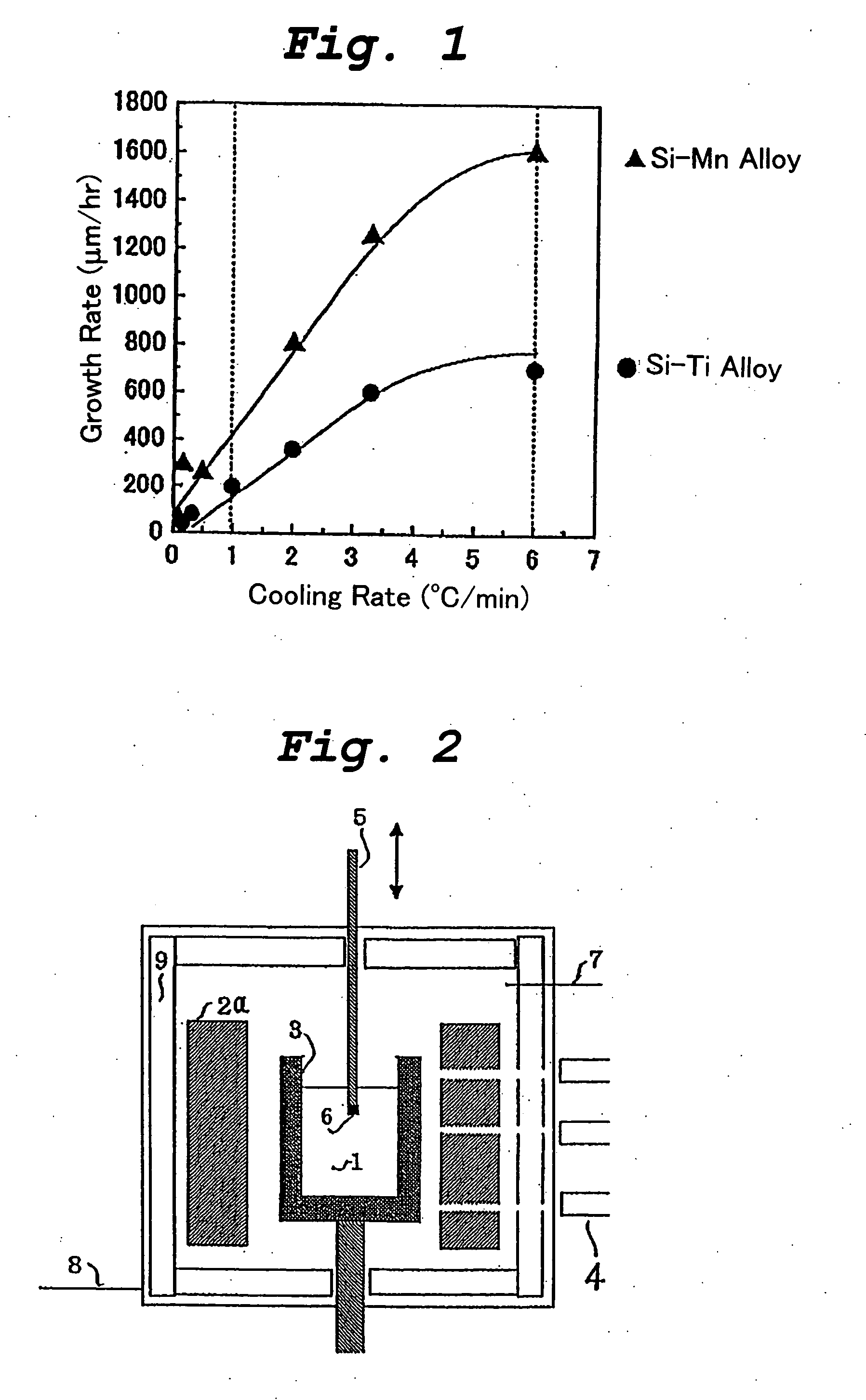Silicon carbide single crystal and a method for its production
a single crystal, silicon carbide technology, applied in the direction of polycrystalline material growth, gel state, condensed vapor, etc., can solve the problems of stacking fault, fatal defects of micropipes, structural defects, etc., and achieve the effect of convenient handling
- Summary
- Abstract
- Description
- Claims
- Application Information
AI Technical Summary
Benefits of technology
Problems solved by technology
Method used
Image
Examples
example 1
[0053] This example illustrates the production of a bulk silicon carbide single crystal by the cooling method using a crystal growth apparatus as shown in FIG. 2.
[0054] The crystal growth apparatus shown in FIG. 2 comprises a graphite crucible 3 containing an alloy melt 1, and the crucible 2 is encircled with a resistance heater 2a made of highly purified graphite. The resistance heater 2a and the graphite crucible 3 are enclosed within a thermal insulator 9. The temperature of the side wall of the graphite crucible 3 is directly measured by a plurality of optical pyrometers 4 through sight holes formed in the heater 2a and the thermal insulator 9. The heater 2a is controlled by the temperatures measured by these pyrometers 4 such that the crucible 3 is heated almost isothermally at a predetermined temperature. The atmosphere in the crystal growth apparatus is adjusted to an Ar atmosphere using a gas inlet 7 and a gas outlet 8.
[0055] The graphite crucible 3 was charged with raw ma...
example 2
[0061] A bulk silicon carbide single crystal was grown on a seed substrate 6 by the cooling method in the same manner as in Example 1 except that the graphite crucible 3 was charged with raw alloy materials having a composition of Si0.4Mn0.6 and heated at 1650° C. to melt the raw materials and that cooling was carried out from that temperature to 1450° C.
example 3
[0062] A bulk silicon carbide single crystal was grown on a seed substrate 6 by the cooling method in the same manner as in Example 2 except that the cooling rate was increased to 2° C. / min.
PUM
| Property | Measurement | Unit |
|---|---|---|
| temperature | aaaaa | aaaaa |
| temperature | aaaaa | aaaaa |
| temperature | aaaaa | aaaaa |
Abstract
Description
Claims
Application Information
 Login to View More
Login to View More - R&D
- Intellectual Property
- Life Sciences
- Materials
- Tech Scout
- Unparalleled Data Quality
- Higher Quality Content
- 60% Fewer Hallucinations
Browse by: Latest US Patents, China's latest patents, Technical Efficacy Thesaurus, Application Domain, Technology Topic, Popular Technical Reports.
© 2025 PatSnap. All rights reserved.Legal|Privacy policy|Modern Slavery Act Transparency Statement|Sitemap|About US| Contact US: help@patsnap.com



